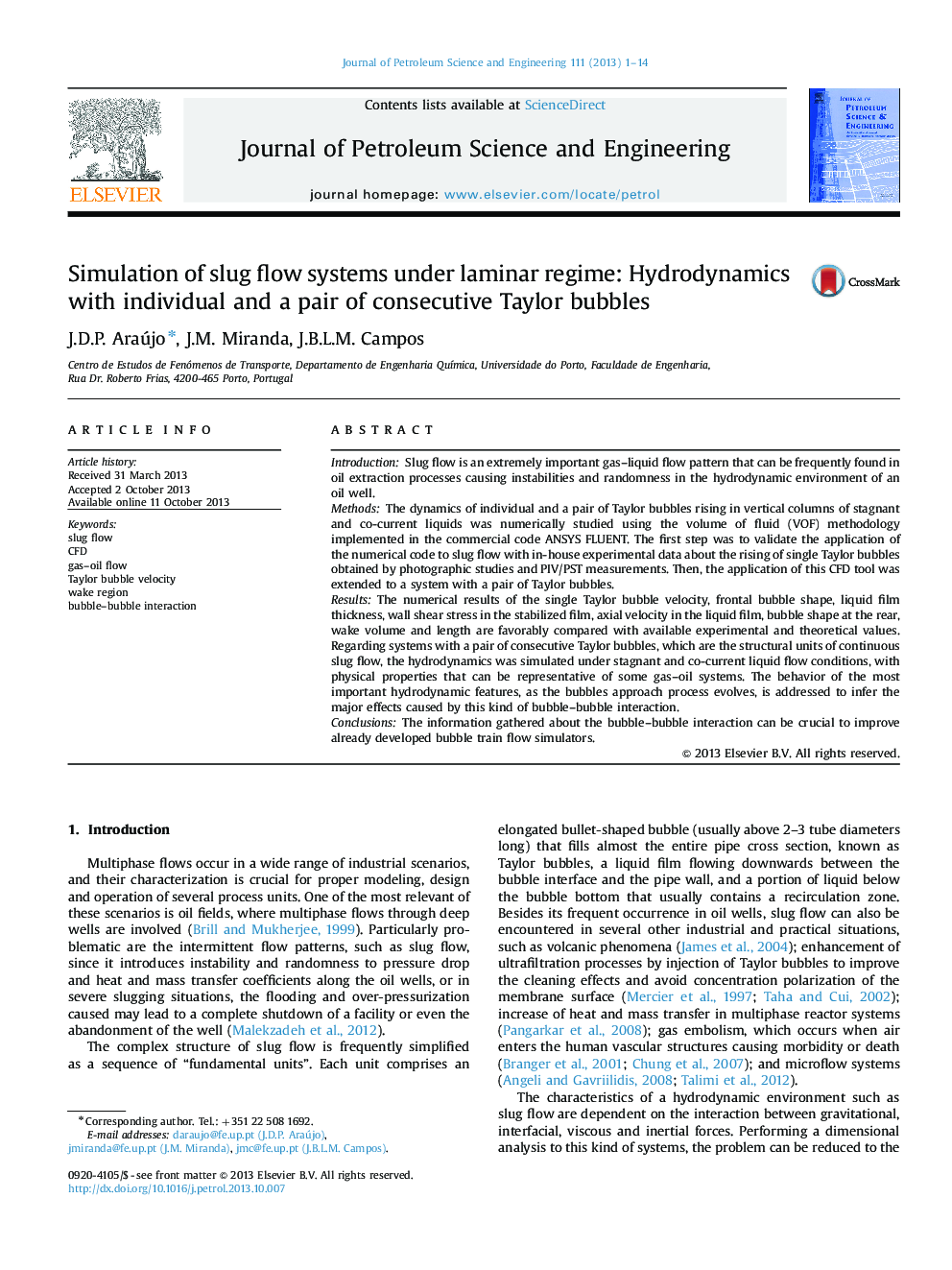| کد مقاله | کد نشریه | سال انتشار | مقاله انگلیسی | نسخه تمام متن |
|---|---|---|---|---|
| 1755072 | 1522830 | 2013 | 14 صفحه PDF | دانلود رایگان |

• Validation of the numerical code with experimental data for Taylor bubbles flow.
• Interaction between two Taylor bubbles flowing in stagnant and co-current liquid.
• Evolution of the film thickness and wake region of the trailing bubble with d/Dd/D.
• Equations of U/USBU/USB are proposed for stagnant liquid and co-current flow conditions.
• Numerical results are valid for the flow of Taylor bubbles in heavy oil systems.
IntroductionSlug flow is an extremely important gas–liquid flow pattern that can be frequently found in oil extraction processes causing instabilities and randomness in the hydrodynamic environment of an oil well.MethodsThe dynamics of individual and a pair of Taylor bubbles rising in vertical columns of stagnant and co-current liquids was numerically studied using the volume of fluid (VOF) methodology implemented in the commercial code ANSYS FLUENT. The first step was to validate the application of the numerical code to slug flow with in-house experimental data about the rising of single Taylor bubbles obtained by photographic studies and PIV/PST measurements. Then, the application of this CFD tool was extended to a system with a pair of Taylor bubbles.ResultsThe numerical results of the single Taylor bubble velocity, frontal bubble shape, liquid film thickness, wall shear stress in the stabilized film, axial velocity in the liquid film, bubble shape at the rear, wake volume and length are favorably compared with available experimental and theoretical values. Regarding systems with a pair of consecutive Taylor bubbles, which are the structural units of continuous slug flow, the hydrodynamics was simulated under stagnant and co-current liquid flow conditions, with physical properties that can be representative of some gas–oil systems. The behavior of the most important hydrodynamic features, as the bubbles approach process evolves, is addressed to infer the major effects caused by this kind of bubble–bubble interaction.ConclusionsThe information gathered about the bubble–bubble interaction can be crucial to improve already developed bubble train flow simulators.
Journal: Journal of Petroleum Science and Engineering - Volume 111, November 2013, Pages 1–14